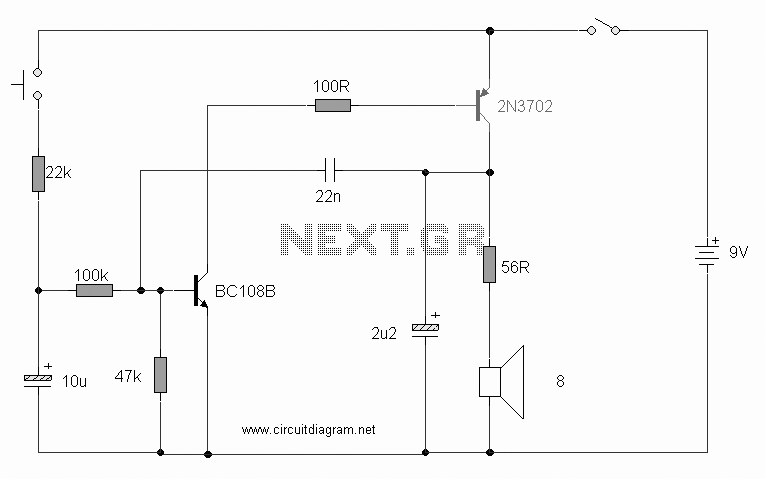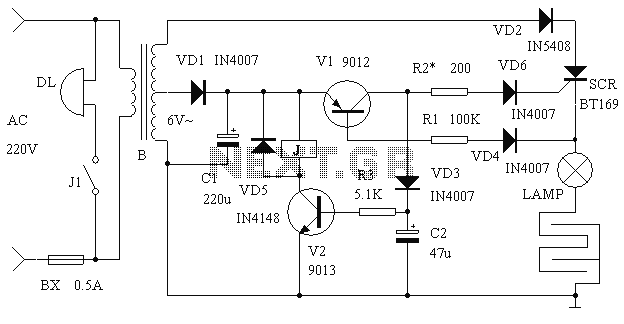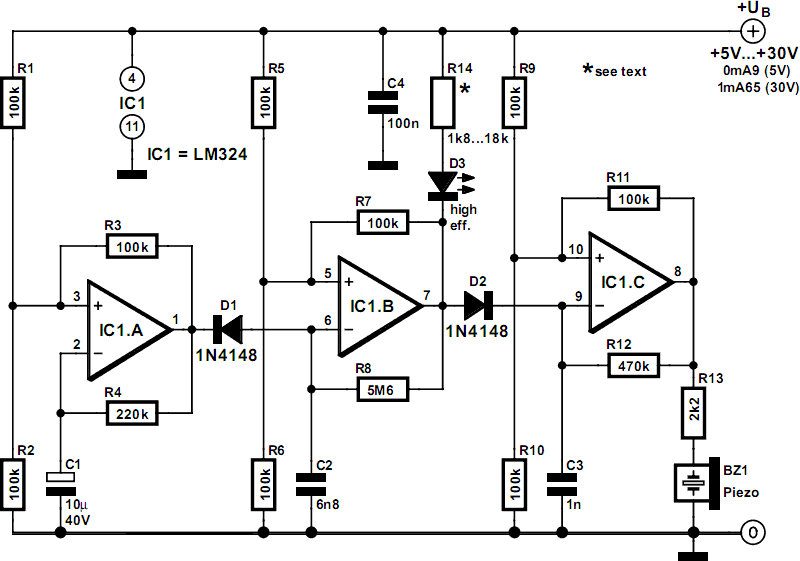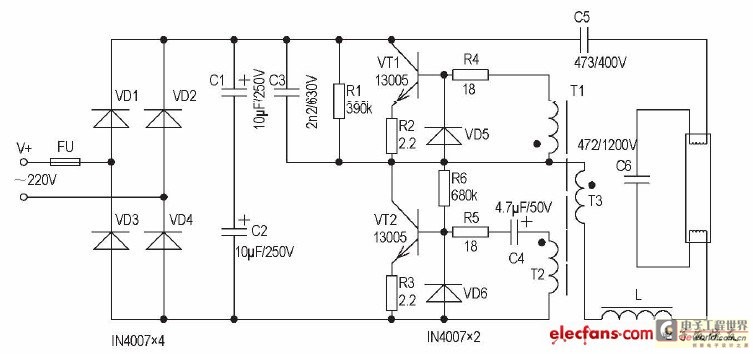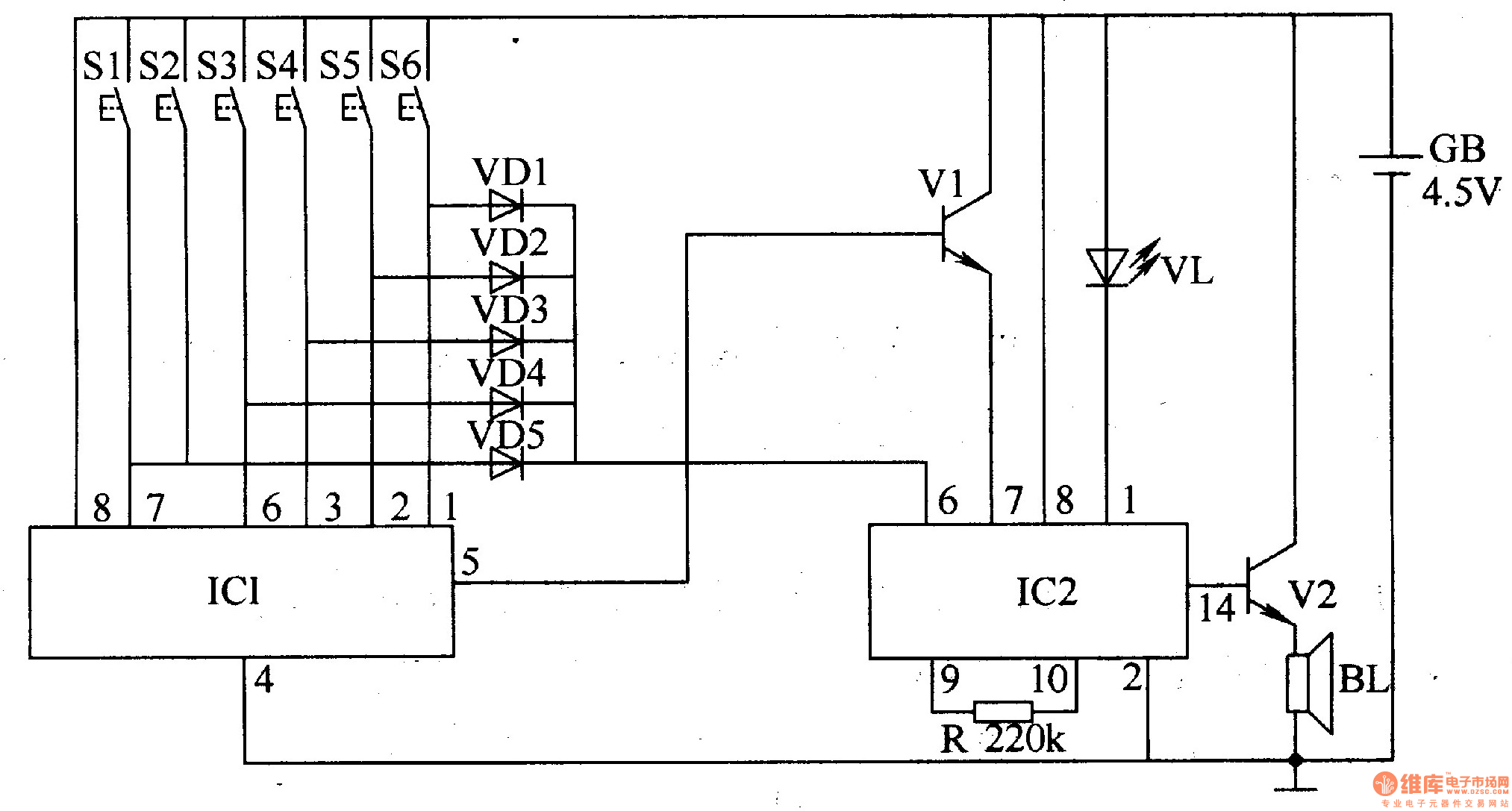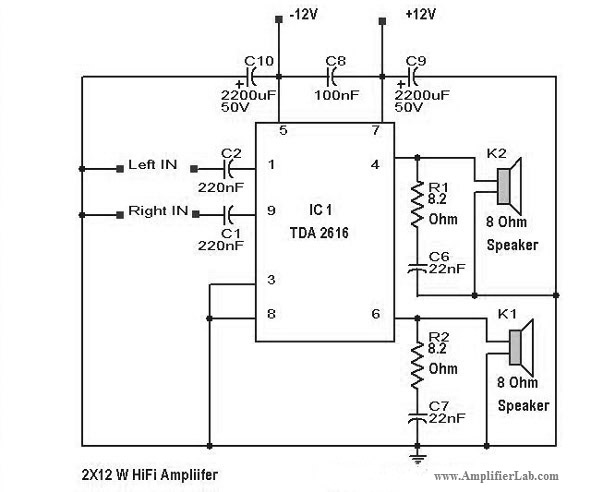
Politely welcoming electronic doorbell
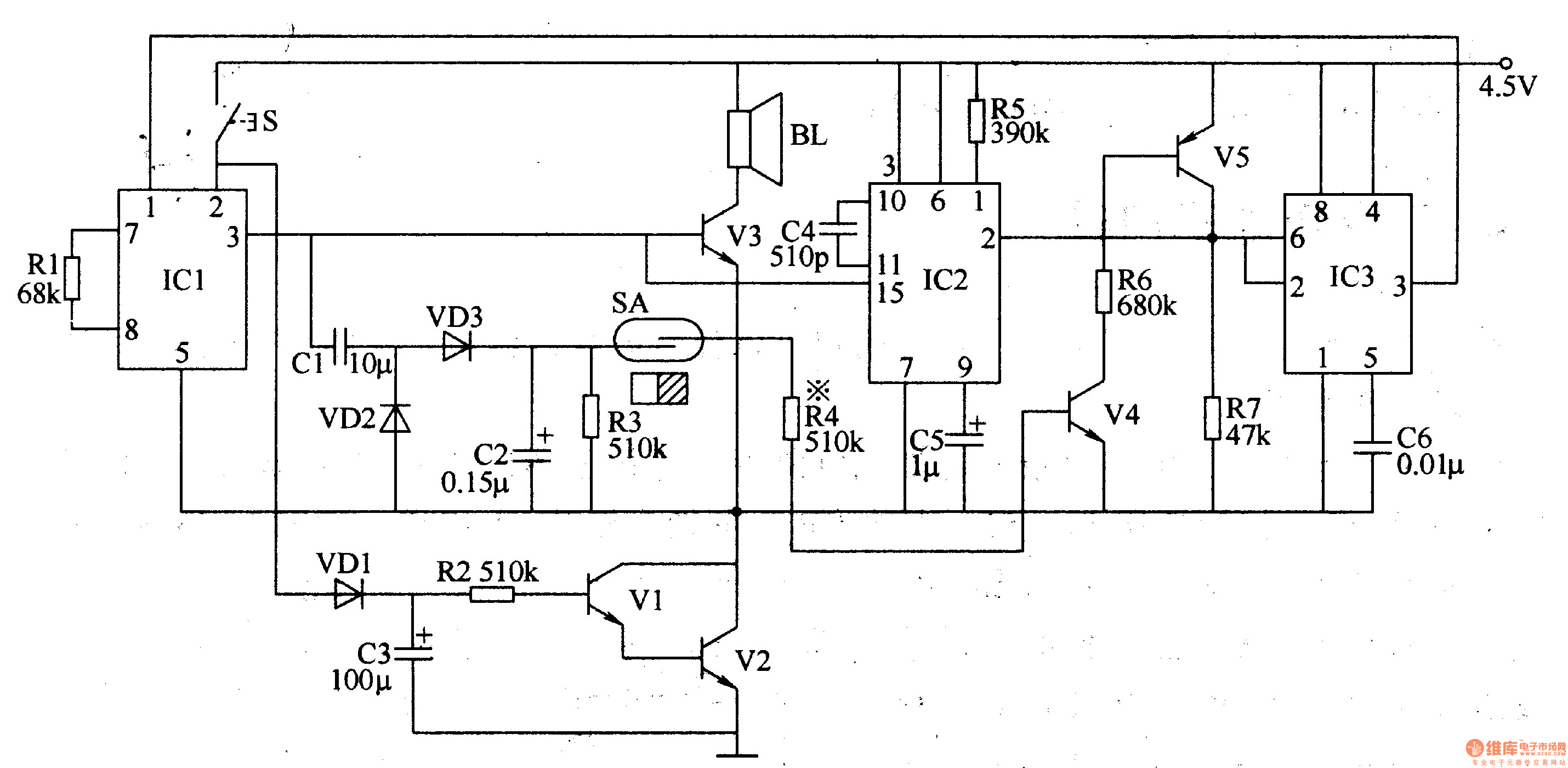
The electronic doorbell circuit is designed to provide a polite and welcoming sound upon activation. It consists of several key components, including a trigger control circuit, an audio amplifier output circuit, a music circuit, and a voice delay control circuit, as illustrated in Figure 3-122. The trigger control circuit is made up of a doorbell button (S), magnetic switches (SA), transistors (V4, V5), resistors (R3, R4, R6), diodes (VD2, VD3), and a capacitor.
The electronic doorbell circuit operates by utilizing a trigger control mechanism that activates the audio output when the doorbell button is pressed. The button (S) serves as the primary input, which, when engaged, completes the circuit. This action can also be influenced by magnetic switches (SA) that may be employed to enhance the circuit's functionality, allowing for additional activation methods.
Transistors (V4 and V5) function as amplifiers and switches in the circuit, controlling the flow of current based on the input received from the doorbell button and magnetic switches. The resistors (R3, R4, and R6) are used to limit current and set appropriate voltage levels for the transistors to operate efficiently. Diodes (VD2 and VD3) are included to prevent reverse polarity and protect sensitive components from voltage spikes.
The audio amplifier output circuit is responsible for amplifying the sound generated by the music circuit, which produces the welcoming tones when the doorbell is activated. The voice delay control circuit adds a feature that allows for a brief pause before the sound is emitted, enhancing the overall user experience by providing a more refined auditory response.
This circuit design emphasizes reliability and user-friendliness, making it suitable for various residential applications. The combination of these components ensures that the electronic doorbell functions effectively, delivering a pleasant sound to greet visitors.The politely welcoming electronic doorbell circuit is composed of the trigger control circuit, audio amplifier output circuit, music circuit, voice delay control circuit, and it is shown in Figure 3-122. Trigger control circuit is composed of the doorbell button S, magnetic switches SA, transistors V4, V5, resistors R3, R4, R6, diodes VD2, VD3, and capacitor..
🔗 External reference
The electronic doorbell circuit operates by utilizing a trigger control mechanism that activates the audio output when the doorbell button is pressed. The button (S) serves as the primary input, which, when engaged, completes the circuit. This action can also be influenced by magnetic switches (SA) that may be employed to enhance the circuit's functionality, allowing for additional activation methods.
Transistors (V4 and V5) function as amplifiers and switches in the circuit, controlling the flow of current based on the input received from the doorbell button and magnetic switches. The resistors (R3, R4, and R6) are used to limit current and set appropriate voltage levels for the transistors to operate efficiently. Diodes (VD2 and VD3) are included to prevent reverse polarity and protect sensitive components from voltage spikes.
The audio amplifier output circuit is responsible for amplifying the sound generated by the music circuit, which produces the welcoming tones when the doorbell is activated. The voice delay control circuit adds a feature that allows for a brief pause before the sound is emitted, enhancing the overall user experience by providing a more refined auditory response.
This circuit design emphasizes reliability and user-friendliness, making it suitable for various residential applications. The combination of these components ensures that the electronic doorbell functions effectively, delivering a pleasant sound to greet visitors.The politely welcoming electronic doorbell circuit is composed of the trigger control circuit, audio amplifier output circuit, music circuit, voice delay control circuit, and it is shown in Figure 3-122. Trigger control circuit is composed of the doorbell button S, magnetic switches SA, transistors V4, V5, resistors R3, R4, R6, diodes VD2, VD3, and capacitor..
🔗 External reference
